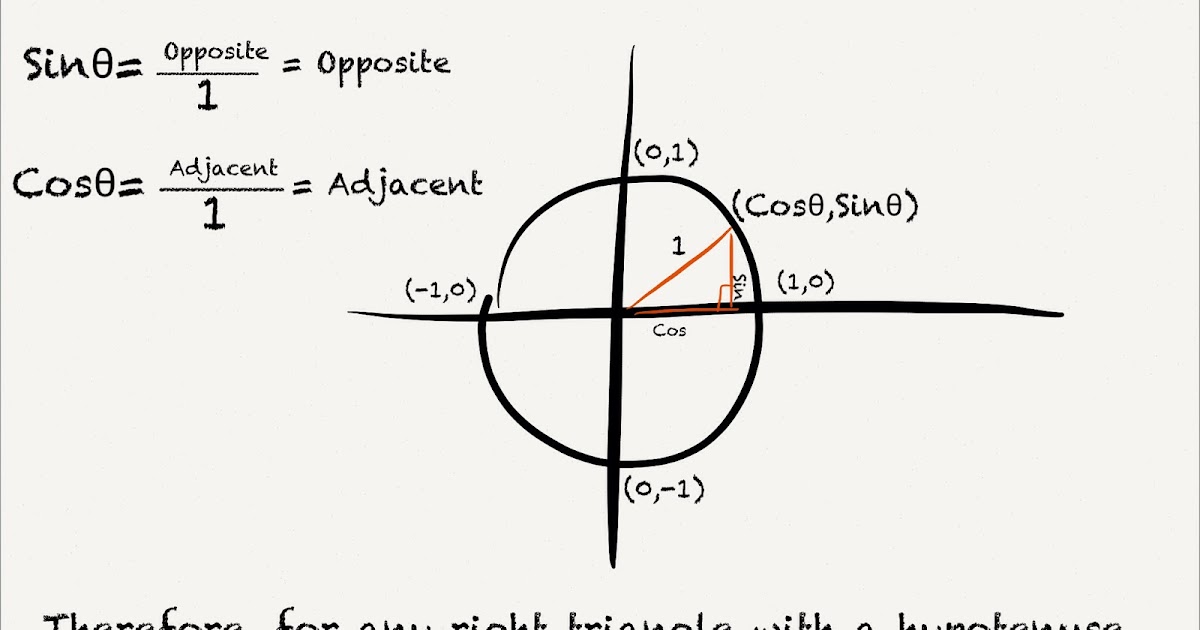
Let's use this idea to find the 6 trig functions for 210° First draw a picture and label (We know that 210° will be in Quadrant III) Now drop a perpendicular line from the terminal side of the angle to the x-axis =210° The reference angle will be the angle formed by the terminal side of the angle and the x-axis. The acute angle formed by the terminal side of and either the positive x-axis or the negative x-axis is called the reference angle for . Let denote a nonacute angle that lies in a quadrant. =135° 1 45° -1 We are going to use this method to find angles that are non acute, finding an acute reference angle, making a triangle and seeing which quadrant we are in to help with the signs. Notice the -1 instead of 1 since the terminal side of the angle is in quadrant II where x values are negative. Putting the negative on the 1 will take care of this problem. x values are negative in quadrant II so put a negative on the 1 =135° 1 45° -1 Now we are ready to find the 6 trig functions of 135° The values of the trig functions of angles and their reference angles are the same except possibly they may differ by a negative sign. When you label the sides if you include any signs on them thinking of x & y in that quadrant, it will keep the signs straight on the trig functions. (The sides might be multiples of these lengths but looking as a ratio that won't matter so will work) This is a Quadrant II angle.

Let's label the sides of the triangle according to a 45-45-90 triangle. What is the measure of this reference angle? 180°- 135° = 45° Let's make a right triangle by drawing a line perpendicular to the x-axis joining the terminal side of the angle and the x-axis. This is an acute angle and is called the reference angle. HINT: Since it is 360° all the way around a circle, half way around (a straight line) is 180° =135° referenceangle If is 135°, we can find the angle formed by the negative x-axis and the terminal side of the angle. To do this we'll place angles on a rectangular coordinate system with the initial side on the positive x-axis. Now we will see how we can find the trig function values of any angle. Our method of using right triangles only works for acute angles. Therefore, you will use Trig Ratios, the Triangle Sum Theorem, and/or the Pythagorean Theorem to find any missing angle or side length measures.- E N D - Presentation Transcript Q: What does it mean to solve a right triangle? A: When you solve a right triangle, or any triangle for that matter, it means you need to find all missing sides and angles. Q: Where is the adjacent side of a triangle? A: The adjacent side of a triangle is the side (leg) that is touching the angle but is not the hypotenuse. Q: Where is the hypotenuse of a right triangle? A: They hypotenuse of a right triangle is always opposite the 90 degree angle, and is the longest side. Q: When to use sohcahtoa? A: When you are given a right triangle, where two of the side lengths are given and you are asked to find the third side. We have other methods we’ll learn about in Math Analysis and Trigonometry such as the laws of sines and cosines to handle those cases.

If we have an oblique triangle, then we can’t assume these trig ratios will work. Q: Is sohcahtoa only for right triangles? A: Yes, it only applies to right triangles.

So how do we remember these three trig ratios and use them to solve for missing sides and angles?įinding Sides and Angles Using Inverse Trig Common Questions Remember the three basic ratios are called Sine, Cosine, and Tangent, and they represent the foundational Trigonometric Ratios, after the Greek word for triangle measurement.Īnd these trigonometric ratios allow us to find missing sides of a right triangle, as well as missing angles. Key Point: Regardless of the size of the triangle, these trigonometric ratios will always hold true for right triangles.

Therefore, the sets of ratios depend only on the measure of the acute angle, not the size of the triangle. It stated that the ratios of the lengths of two sides of similar right triangles are equal. We’ll dive further into the theory behind it in the video below, but essentially it’s taken from the AA Similarity Postulate that we learned about previously. It’s a mnemonic device to help you remember the three basic trig ratios used to solve for missing sides and angles in a right triangle. It’s probably one of the most famous math mnemonics alongside PEMDAS.Īnd it’s an essential technique for your mathematical toolbelt. Jenn, Founder Calcworkshop ®, 15+ Years Experience (Licensed & Certified Teacher)


 0 kommentar(er)
0 kommentar(er)
